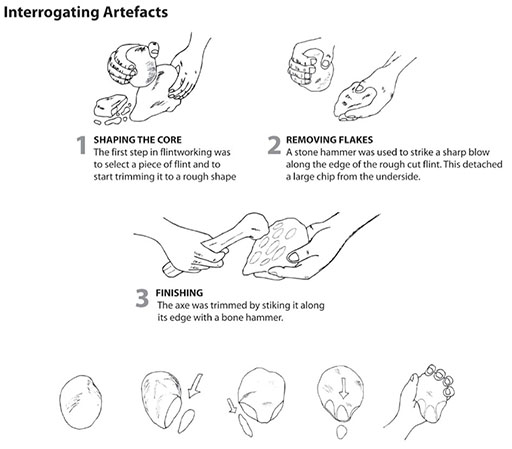Resource 2: Interrogating artefacts
![]()
![]() Background information / subject knowledge for teacher / Teacher resource for planning or adapting to use with pupils
Background information / subject knowledge for teacher / Teacher resource for planning or adapting to use with pupils
An artefact is evidence of the life of early people. When pupils handle or see a picture of an artefact, you first want them to think about:
- How was this made?
- What was it used for?
This works best if there is a local site where such artefacts can be found. On a visit to such sites, pupils need to respect the place and not damage or remove items they see or find. It is useful if an expert or local enthusiast can guide the visit.
The next best thing is for a local museum or regional expert/archaeologist to loan a ‘handling set’ of artefacts for pupils to interrogate in the classroom. But photographs also work well. An enthusiastic teacher could compile a set from old magazines such as Natural Geographic, and magazines like Time and Newsweek often carry photographs of recent discoveries. A serious science teacher needs to be on the constant lookout for such visual resources.
Archaeologists use careful line drawings to illustrate the artefacts they find and such drawings can also be used effectively.
Finally, human thought and imagination are powerful tools we can make use of. Pupils can be led to discuss and picture how prehistoric people probably made certain artefacts. For example, consider how a round river stone that fits comfortably in a human hand could be chipped and shaped to form a large hand-axe or hammerstone that could be used to break open large bones to extract the nutritious marrow.
It doesn’t really matter whether you have access to the real thing, use photographs or drawn illustrations or have to rely on the power of the imagination. The important thing is that your pupils develop a sense of awe and respect for the resourcefulness of early humans in Africa.
Resource 1: The ‘Out of Africa’ theory of human origins




